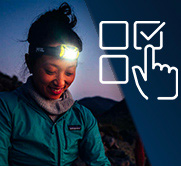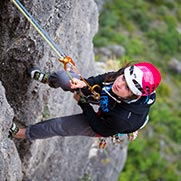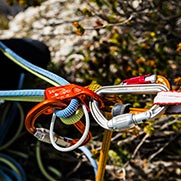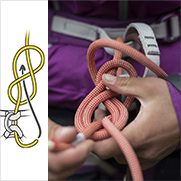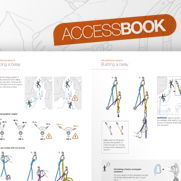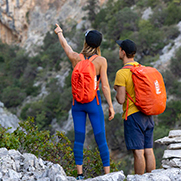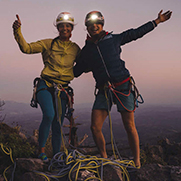Who carries the rope in a group of skiers?
When traveling unroped, the rope must be ready to be effectively deployed in case of an accident. Without going to the point of pre-installing a haul system in a pack, and without overloading the skiers with excessive equipment, it is necessary to anticipate the risks that will be encountered on the planned route, in order to distribute the equipment in a logical manner.
Warnings
- Carefully read the Instructions for Use used in this technical advice before consulting the advice itself. You must have already read and understood the information in the Instructions for Use to be able to understand this supplementary information.
- Mastering these techniques requires specific training. Work with a professional to confirm your ability to perform these techniques safely and independently before attempting them unsupervised.
- We provide examples of techniques related to your activity. There may be others that we do not describe here.
Attention: we are talking only about collective or rescue equipment; each user must choose his/her personal equipment according to the situation.
1. Skiing on a glacier with a clear leader
The leader goes in front to find the route, and so is the one most likely to fall into a crevasse, and therefore must not be the only one carrying a rope.
On a snow-covered glacier, all group members are susceptible to being surprised by a hidden hazard. So you must maximize the chances of rescue by having at least two ropes in the group, carried by teammates sufficiently separated from one another.
Note: the decision whether to ski roped or unroped on a glacier cannot be taken except on-site, depending on the conditions and assessed risks. This is not the subject of this advice, which only addresses the case where the choice is made to ski unroped.
2. Couloir or descent which is certain to not have a steep section over 15 m in height
Except for specific cases (route finding, uncertain conditions), the most skilled skier goes second and carries the rope. He/she can help the first skier from above in case of a problem.
Otherwise, if the first skier takes the rope down a steep section which the second skier cannot negotiate, the first skier cannot help the second.
3. Couloir or descent with a planned rappel of more than 15 m or with uncertainty about the possible obstacles.
To share the weight and bulk, each teammate carries a RAD SYSTEM. The equipment in the kit allows a rappel to be improvised in many situations. Depending on the case, it may be complemented with rope slings or pitons to create improvised anchors.

